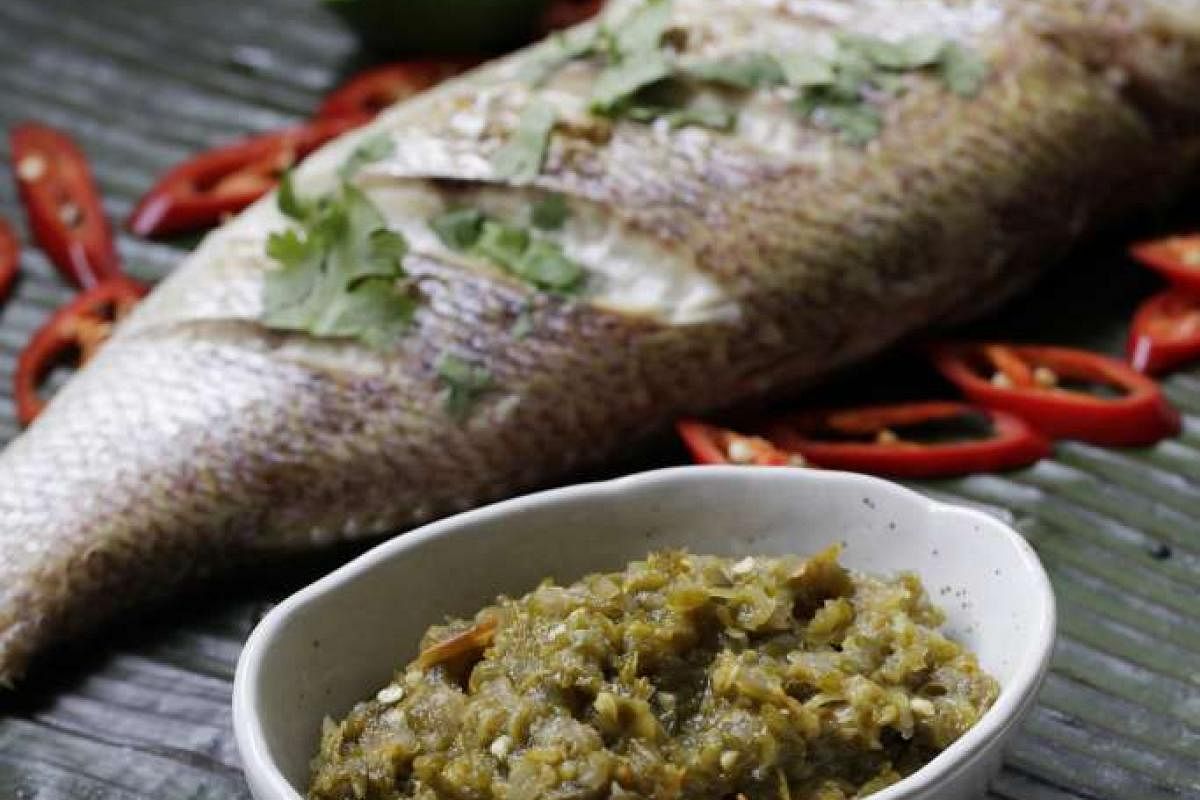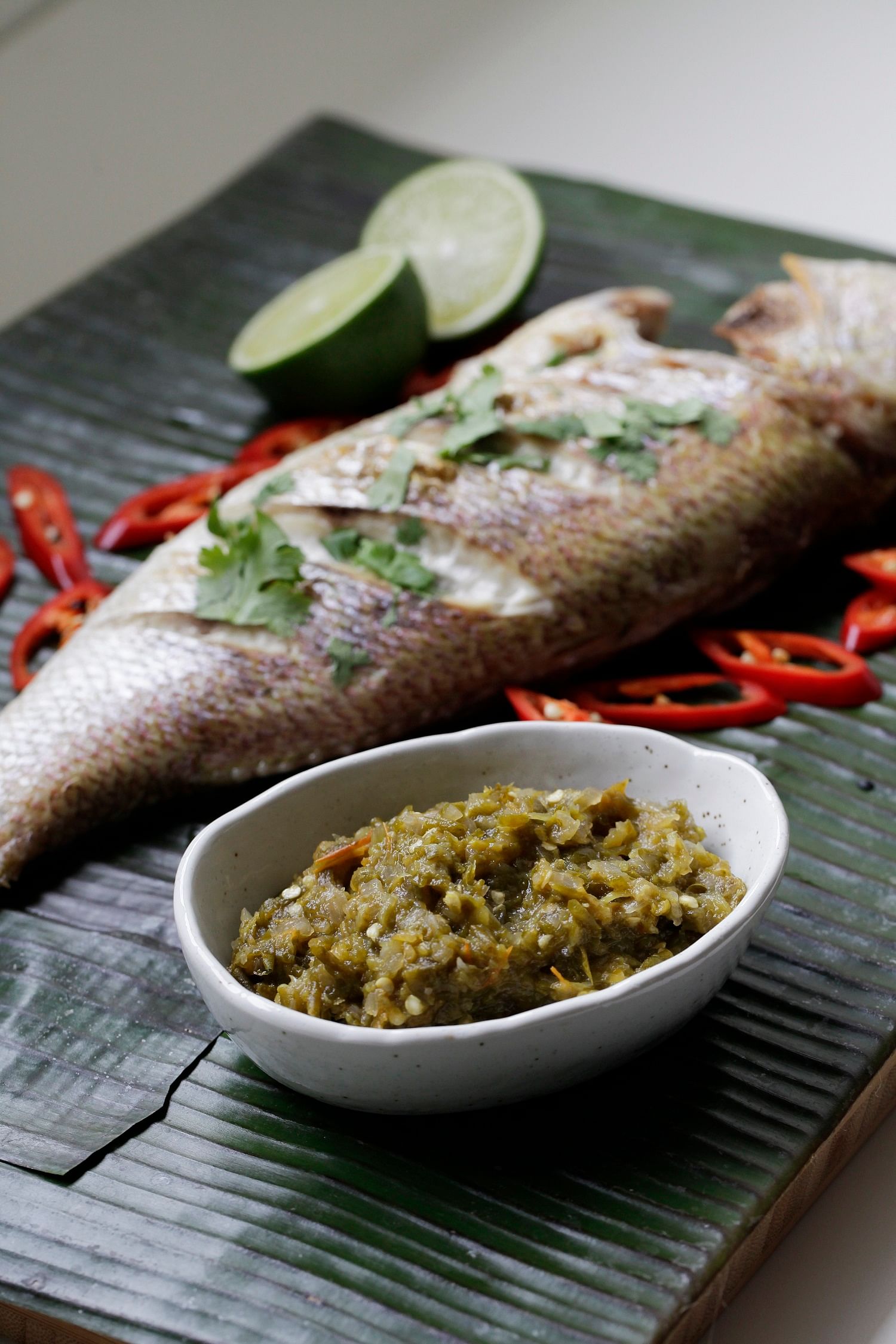Hunger Management
Get all fired up with a green chilli sambal
Give dishes an extra kick by serving them with a versatile green chilli sambal

Even a pathetic chilli coward like me craves heat sometimes, and the wet, wet days last week sparked a fierce longing for something spicy.
All I could think about was laksa with a big dollop of sambal, clam pasta with chilli padi, one of my friend Lawrence's mouth-burning and sweat-inducing curries, Sriracha chilli sauce squeezed over piles of thick-cut fries, and a particular flavour of Indomie instant noodles, which comes with a sachet of cabe ijo or green chilli sambal.
A friend who works in Jakarta gives me packs of the instant noodles and I cannot get enough of the spicy sambal, one of the delights of Padang cuisine.
I decided to make a batch from scratch and, of course, it tasted much better than the version that comes with the noodles. In fact, the whole exercise was so rewarding that I might make it regularly, so that I always have a jar of it in the fridge.
It is a versatile condiment. Here, I serve it alongside baked snapper, but it can go just as well with grilled prawns or squid, fried chicken or fried rice. It can also be mushed into hot rice and yes, tossed with instant noodles.
The sambal is tangy, spicy, a little sweet, and very addictive.
Unlike many other kinds of sambal, it is a cinch to make. No stinking up the home by toasting belacan, no tedious frying with lots of oil while standing by the stove in a hot kitchen. There is some frying, but it is not a major production.

Most green chillies are only mildly spicy, although I have been fortunate in getting the occasional spicy batch. If you need more heat, add green chilli padi to taste.
In Indonesia, you can get green tomatoes but they are virtually non-existent here. So I look for pale-skinned cooking tomatoes, the pallid kind you will never want in a salad.
The chillies are steamed with the tomatoes and a handful of shallots, then there is an option of grinding them with a mortar and pestle or pulsing them in a food processor. I always choose the easy way out and like a fairly smooth condiment, so I process the chillies quite fine.
Then comes a short frying time with minimal oil. The idea is to cook off the liquid from the steaming.
I have made a couple of tweaks to the classic recipe.
Many versions call for anchovies to be added, but since I am serving it with fish, I have left that out.
I have also added the zest of a large lime because it perks up the flavour and I really hate wasting the most flavourful part of the citrus.
Frying the sambal with torn-up kaffir lime leaves and lemongrass perks it up. They add fragrance to the finished product, so do not skip that step, even though fishing out the lime leaves is a bit of a bother.
The recipe here should yield enough to go with the fish, with some left over to use on other dishes.
In case you are cooking for chilli or condiment fiends and are certain they will polish everything off, make a double batch.
That, of course, is what I should have done.
Baked Snapper With Green Chilli Sambal
INGREDIENTS
For the sambal:
300g large green chillies
4 to 5 green chilli padi or to taste (optional)
6 to 8 shallots
3 small unripe or green tomatoes, about 200g
3 stalks lemongrass
8 to 10 kaffir lime leaves
1 large lime
1 Tbs cooking oil
1 Tbs sugar or to taste
1 tsp salt or to taste
For the fish:
2 to 3 sheets banana leaves
One large red or white snapper, 1 to 1.2kg
3 stalks lemongrass
6 to 8 kaffir lime leaves
11/2 tsp salt
1 tsp oil
METHOD
1. Make the sambal: Chop off and discard the chilli stems, and cut the chillies crosswise into 3 to 4cm-long pieces. Place on a large, heatproof plate. If using chilli padi, discard the stalks and cut in half crosswise. Peel and roughly chop the shallots, then place on the plate. Core and chop the tomatoes into chunks and place on the plate.
2. Steam the chillies, shallots and tomatoes for 15 minutes over medium high heat.
3. In the meantime, cut off and discard the top part of the lemongrass, leaving behind the bulbous end. Bruise with the back of a knife. Tear up the kaffir lime leaves. Zest and juice the lime.
4. When the chillies have steamed for 15 minutes, place in a food processor, along with any juices on the plate, and pulse until the ingredients are as fine or coarse as you like. You can also pound the ingredients in batches in a mortar and pestle.
5. Heat the oil in a large pan or wok over medium heat. Pour in the chilli mixture, add the lemongrass and kaffir lime leaves. Cook, stirring often, for about five minutes. Add the lime zest and juice, the sugar and salt. Continue to cook for another 10 minutes, or until the liquid in the pan has evaporated. Discard the lemongrass and kaffir lime leaves. Add more salt or sugar to the sambal if needed. Scoop into a clean serving dish or glass jar with a lid. Leftover sambal will keep in the fridge for four to five days.
6. Cook the fish: Preheat the oven to 180 deg C.
7. Blanch the banana leaves with boiling water and wipe very dry with paper towels. Place one sheet on a foil-lined baking tray that will hold the fish. Place the other leaves on a serving platter.
8. Trim the lemongrass and bruise the bulbous ends. Tear the kaffir lime leaves.
9. Rinse the fish under running water and pat very dry with paper towels. Rub the cavity with 1/2 tsp salt. Stuff the lemongrass and kaffir lime leaves in it.
10. Make three diagonal slashes on both sides of the fish and rub 1/2 tsp salt on each side. Rub the oil over the entire fish and place on the baking dish. Roast in the oven for 30 minutes. Turn on the grill function and move the fish closer to the top heating element of the oven. Let cook for another five to six minutes or until the fish is lightly browned.
11. Transfer the fish onto the banana leaf-lined platter and serve with the sambal.
Serves four to six as part of a meal with other dishes
Join ST's Telegram channel and get the latest breaking news delivered to you.
A version of this article appeared in the print edition of The Sunday Times on July 16, 2017, with the headline Get all fired up with a green chilli sambal. Subscribe

